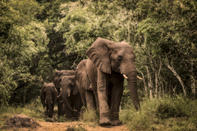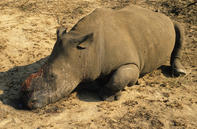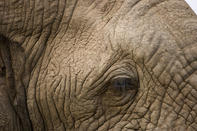A Short History
In 1998, Lawrence Anthony purchased Windy Ridge, 1500 hectare of rustic land. In 1999, the first of the elephants arrived, a herd of seven. They were known as Nana, Frankie, Ilanga, Numzane, Mandla, Mabula and Marula.

They especially enjoy the gardens of the main farmhouse where Lawrence and Francoise Malby lived. Thula Thula Elephant Safari Lodge opened in 2000 and by the end of 2006 the tented camps were opened. In between those dates, from March to September 2003, Lawrence Anthony went to Baghdad.
Here, as a true conservationist, Lawrence, had only one mission, to rescue the animals of Baghdad Zoo, who were caught in the crossfire in the heart of the city during the war in Iraq. In 2006, Lawrence received the United Nations Earth Day medal for his work in Bagdad. He also published his book on the struggles and triumphs of rescuing the animals of Baghdad Zoo, Babylon’s Ark.
Expansion, Poaching and Books

KwaZulu Natal Parks board, during 2008 approved the dropping of the reserves fences and joining the land with the community land of Fundimvelo, adding 800 ha more to the Thula Thula Game Reserve. The year of 2009 had some great highs and some extremely sad lows.
The Elephant Whisperer, a book by Lawrence Anthony was published, which depicts the lessons learnt from the then aggressive elephant herd that was given to Thula Thula in 1999. The sad news was that poachers killed Heidi, the last white rhino on Thula Thula. However, in October and December, Thula Thula saw the arrival of two orphaned rhinos, Thabo and Ntombi.
Poaching struck another blow in 2012 when Thabo was shot at, as a consequence the Thula Thula Rhino Fund was established by Francoise, to try to raise awareness and implement anti-poaching actions to save the rhinos. Horn infusion with poison and an indelible dye were administered to Thabo and Ntombi to try to deter the poaching in 2013. However, both Thabo and Ntombi were dehorned in 2016 due to escalating rhino poaching in the area.
In 2014 a rhino orphanage was established, the first rhino sanctuary in KwaZulu Natal, only to close in 2017 due to a tragic poaching incident where two rhinos were killed. Not to be deterred, later that year the Thula Thula Wildlife Rehabilitation Centre opened its doors to wounded and orphaned wildlife to enable them to be cared for and rehabilitated back into the game reserve.
2010, saw another increase of 1500 ha of land to the reserve when a partnership between neighbours was made. During 2011, Mkhulu Dam was built on the Fundimvelo land, a place where Lawrence would meet with his elephants. Mkhulu, means Grandfather in Zulu, and was named after Lawrence as a show of respect.
Elephants Mourn

Sadly in 2012, Lawrence Anthony passed away, and his elephants paid their respects by marching to the main house on the day of his death. They also marched to the main house in 2013, 2014 and 2015, arriving on the same day and time marking the anniversary of Lawrence's death.
The elephant herd continued to grow so a contraceptive treatment on the male elephants commenced in 2012, as the population had reached maximum capacity for the reserve. In 2015, the South African Conservation Fund, a non-profit fund, was created to raise funds to expand Thula Thula to accommodate the growing herd.
From the original seven elephants, the herd had expanded to 30 by 2016, with the birth of Themba, which means faith and hope. 2018 saw the opening of the Volunteers Academy, which is designed to educate and inspire people about nature and wildlife conservation. 2018, also saw the launch of Francoise Anthony’s book, An Elephant in My Kitchen, which is the sequel to the Elephant Whisperer, another best seller.